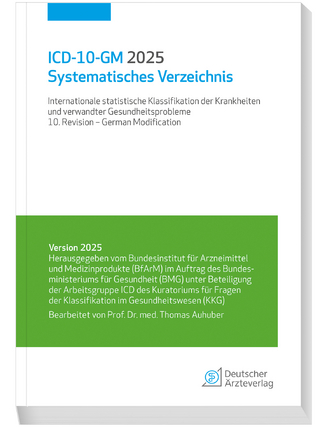
Positive Feedback in Natural Systems
Springer Berlin (Verlag)
978-3-642-82627-6 (ISBN)
1. Introduction.- 1.1 Homeostasis.- 1.2 Positive Feedback.- 1.3 Ecological Systems with Positive Feedback.- 1.4 Generalization 1: Increasing Complexity.- 1.5 Generalization 2: Accelerating Change.- 1.6 Generalization 3: Threshold Effects.- 1.7 Generalization 4: Fragility of Complex Systems.- 1.8 Summary and Conclusions.- 2. The Mathematics of Positive Feedback.- 2.1 Graphical Analysis of a Simple Dynamic Positive Feedback System.- 2.2 A System of Two Mutualists.- 2.3 A System of Two Competitors.- 2.4 Mathematical Analysis of Positive Feedback.- 2.5 Summary and Conclusions.- 3. Physical Systems.- 3.1 The Life History of a Star.- 3.2 Geophysical Systems.- 3.3 Autocatalysis in Chemical Systems.- 3.4 Summary and Conclusions.- 4. Evolutionary Processes.- 4.1 Early Evolution of Life.- 4.2 Evolution at the Species Level.- 4.3 Coevolution.- 4.4 Summary and Conclusions.- 5. Organisms Physiology and Behaviour.- 5.1 Destructive Positive Feedback.- 5.2 Biochemical Processes in Cells and Organisms.- 5.3 Feeding and Drinking Behavior.- 5.4 Sleep.- 5.5 Movement and Motor-Sensory Relationships.- 5.6 Mind-Body Relationship.- 5.7 Summary and Conclusions.- 6. Resource Utilization by Organisms.- 6.1 Energy Allocation Tactics.- 6.2 Territorial Defense Strategies.- 6.3 Chemical Defense Strategies.- 6.4 Growth Rate Strategy.- 6.5 Summary and Conclusions.- 7. Social Behavior.- 7.1 Evolution of r- and K-strategies.- 7.2 Development of Social Strategies.- 7.3 Mating and Reproduction.- 7.4 Population Models Incorporating Sexual Reproduction.- 7.5 Small Group Dynamics.- 7.6 Castes In Insect Societies.- 7.7 Dominance Within Groups.- 7.8 Models of Group Formation and Size.- 7.9 The Schooling of Fish.- 7.10 Social Interactions and Game Theory.- 7.11 Summary and Conclusions.- 8. Mutualistic and Competitive Systems.- 8.1 Dynamics of Mutualistic Communities.- 8.2 Limits to Mutual Benefaction.- 8.3 Multi-Species Mutualism.- 8.4 Models of the Evolution of Mutualism.- 8.5 Isolation and Obligate Mutualism.- 8.6 Limited Competition.- 8.7 Summary and Conclusions.- 9. Age-Structured Populations.- 9.1 Age Structure.- 9.2 Leslie Matrices.- 9.3 Compensatory Leslie Matrices.- 9.4 Interacting Populations.- 9.5 Coexistence of Two Interacting Populations.- 9.6 Other Compensatory Models.- 9.7 Life-History Strategies.- 9.8 Intrinsic Rate of Increase.- 9.9 Reproductive Strategies.- 9.10 Summary and Conclusions.- 10. Spatially Heterogeneous Systems: Islands and Patchy Regions.- 10.1 Classical Theory of Island Biogeography.- 10.2 Island Clusters.- 10.3 Insular Reserves.- 10.4 Modeling the Patchy System.- 10.5 A Single Species in a Patchy Region.- 10.6 Time to Extinction on a Patch.- 10.7 Persistence of a Species in a Two-Patch Environment.- 10.8 Stability of a Single-Species, Two-Patch System.- 10.9 Persistence of a Species in an N-Patch Environment.- 10.10 Multi-Species, Multi-patch Systems with Competition and Mutalism.- 10.11 Persistence of a Species in a Two-Species, Two-Patch Environment.- 10.12 Persistence of a Species in an L-Species, iV-Patch Environment.- 10.13 Stability of a Two-Species, Two-Patch Model.- 10.14 Stability of an L-Species, iV-Patch Model.- 10.15 Relationship Between Reserve Design and Species Persistence.- 10.16 Summary and Conclusions.- 11. Spatially Heterogeneous Ecosystems: Pattern Formation.- 11.1 Spontaneous Emergence of Spatial Patterns.- 11.2 Diffusion Model.- 11.3 Pattern Formation Through Instability.- 11.4 Congregation of Colonial Organisms.- 11.5 Boundary Formation by Competition.- 11.6 Summary and Conclusions.- 12. Disease and Pest Outbreaks.- 12.1 Physiological Effects in the Host Species.- 12.2 Mutualistic Interactions of more than one Pathogenic Agent.- 12.3 Models of a Directly Communicated Disease or Parasite.- 12.4 Effects of Spatial Heterogeneity on Disease Outbreak Threshold Conditions.- 12.5 Design of Immunization Programs.- 12.6 Shape of the Contagion Rate Function.- 12.7 Comparison with other Spatially Heterogeneous Models.- 12
| Erscheint lt. Verlag | 15.3.2012 |
|---|---|
| Reihe/Serie | Biomathematics |
| Zusatzinfo | XII, 290 p. |
| Verlagsort | Berlin |
| Sprache | englisch |
| Maße | 170 x 244 mm |
| Gewicht | 534 g |
| Themenwelt | Informatik ► Weitere Themen ► Bioinformatik |
| Mathematik / Informatik ► Mathematik ► Algebra | |
| Mathematik / Informatik ► Mathematik ► Angewandte Mathematik | |
| Schlagworte | Behavior • Complex System • Cybernetics • Dynamics • homeostasis • Markov Chain • Mathematica • Mathematics • matrices • Modeling • Regulation • Society • stability • System • Systems |
| ISBN-10 | 3-642-82627-X / 364282627X |
| ISBN-13 | 978-3-642-82627-6 / 9783642826276 |
| Zustand | Neuware |
| Informationen gemäß Produktsicherheitsverordnung (GPSR) | |
| Haben Sie eine Frage zum Produkt? |
aus dem Bereich


